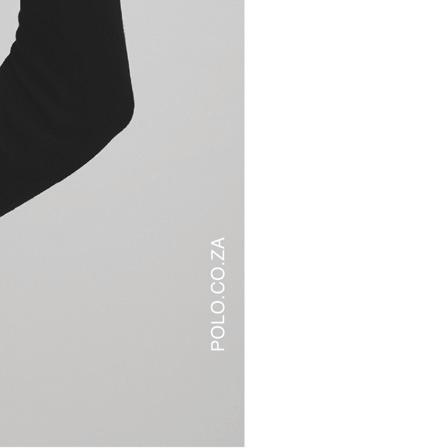
FROM SOUTH AFRICA TO THE WORLD: THE UNCOMPROMISING LUXURY & STORIED SAVOIR-FAIRE OF BUDISM COUTURE A FRIC A











 Proudly ranked among the world’s top ten lifestyle estates
Proudly ranked among the world’s top ten lifestyle estates



HAUTE COUTURE RISING: Cape Town-based fashion house Budism Couture is reinventing the idea of the fashion capital
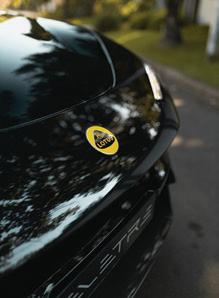
SAILING TOWARDS THE SUN: Pharrell Williams, men’s creative director of Louis Vuitton, talks to us exclusively about the inspiration behind his latest collection







44 BLISS AND BUSTLE IN BARCELONA: A vibrant city stop on the way to the Med
























































































We chat to the brand’s CEO, Alfonso Dolce, about its past, present, and future














ED’S NOTE









YOUR LUXURY
YOUR DIARY
YOUR WATCHES
YOUR JEWELS
YOUR BEAUTY
YOUR BEAUTY
YOUR TRAVEL
YOUR WHEELS
YOUR DOWNTIME

At the end of 2023, UNESCO released a report titled The Fashion Sector in Africa: Trends, Challenges and Opportunities for Growth, and if one was to use its analysis to paint a picture of fashion in Africa, it would be a head-turning paintby-numbers exercise. The numbers are both astounding and encouraging; 37 of 54 African countries produce cotton to the value of $15.5 billion a year –a climb of 90 percent between 2019 and 2020. With under-25s accounting for 50 percent of the continent’s population and the emerging middle class consisting of more than 35 percent, there’s a healthy pipeline of new consumers eager for fashion Made in Africa – a movement that’s gaining momentum in stilettoed leaps. Thirty-two fashion weeks are held across the continent each year, and a 42 percent increase in demand for African haute couture is expected over the next 10 years. With small and medium-sized enterprises accounting for 90 percent of businesses in Africa’s fashion sector today, a formidable industry is within grasp.
My attendance of the Intra-African Trade Fair in Cairo late last year was an affirming experience, where I witnessed African luxury fashion brands such as David Tlale, Abiola Olusola, and Christie Brown at a spectacular

Winter must-have: Judy Sanderson’s contemporary designs with African sensibility.


fashion show at the Citadel in Old Cairo. As part of Afrexim Bank’s Creative Africa Nexus (CANEX) Programme, African designers have access to skills support, international markets, and funding through impact investment fund FEDA. I watch with a keen eye at what African institutions like Afrexim Bank are doing to take on the challenge of establishing a well-developed fashion industry on this continent.
As the editor of a Pan-African publication, my aim is to showcase and profile best-in-business African brands and the incredible minds behind them. Find Rich Mnisi, Thebe Magugu, and Mmuso Maxwell in our fashion spread (pg 30 – 36), while Lulu Shabell, MD of Lulubell Group and a champion for made-in-Africa luxury, unpacks her commitment to fashion on page 48.
We know our readers are well-travelled, and so, we have also curated the latest in fashion from a global perspective. I had the pleasure of chatting to Dolce&Gabbana CEO, Alfonso Dolce, and enjoyed hearing about the brand’s past, present, and future in an exclusive interview (pg 28). On the topic of exclusives and international convergence in Africa, we feature the duo behind haute couture brand Budism Couture, who’ve chosen our shores as their headquarters to service clients from all over the world. Read how they’re turning the concept of the fashion capital on its well-coiffured head (pg 23).
La D de Dior Cocotte delicately pavéd with snow-set diamonds and enriched with new colourful versions.

Kurt Geiger men’s Western Boot crafted from handfinished fullgrain Italian leather.


Graff’s cinematic new campaign, Galaxia, perfectly captures the otherworldly beauty of its high jewellery creations, emanating an ethereal and feminine allure.



KITSO KGORI
As an architecture scholar, Kitso refined her attributes through rigorous training. She has a keen eye for art and great attention to detail – hence her transition to photography.
“My fashion icon is Nina Sandbech, a Norwegian stylist who has fun with colour. Another woman who inspires me is colourist Tekla Evelina Severin, who said, “Colour is always relative… it will never look the same, it simply depends on what you place it next to.”
See: p30
ONLINE NOW:
An entrepreneur, humanitarian, conservationist, and impact advisor, Nicolene Anley has always done things she believes can make a di erence. Her new platform, Luna Belle Ventures, brings luxury international brands, such as Swedish eyewear Chimi, to the South African market. Read the interview on yourluxury.africa.

THAPELO MOFOKENG
A freelance stylist and producer, the nonbinary creative from Johannesburg, now based in Cape Town, has a fierce passion for fashion, and is a lover of everything inventive and original.
“My style icon is Rihanna – she’s always been experimental with fashion but somehow always stays true to who she is. Fashion is subjective and she gets that and lives in a world where fashion has no rules.”
See: p30
yourluxury.africa

KOKONA ‘KAYKAY’ RIBANE
In addition to co-founding the Dear Ribane collective and Mungu Creative Lab, KayKay also established Usurpa Gallery, Africa’s first NFT fine art space. He challenges norms and reshapes narratives, prioritising the collaborative redefinition of African artistry.
“As far as style icons go, I have admiration for musicians Tyler, the Creator and Manthe Ribane, artists Tebogo Ribane and Daniel Arsham, and interior designer Louis Charles.”
See: p22


















This year, Morocco and Benin will debut at the international Biennale Arte exhibition, another symbol of African artists’ emergence on the global stage. This participation marks a significant move against decades of underrepresentation, and highlights Africa’s rich artistic legacy and contemporary relevance. The Benin Pavilion, curated by Azu Nwagbogu, will explore themes of historical resilience and contemporary challenges, while the Nigerian Pavilion is curated by Aindrea Emelife and aims to challenge stereotypes and showcase diverse cultural expressions. It features artists such as Yinka Shonibare and Toyin Ojih Odutola. The exhibition will be open to the public from 20 April. labiennale.org/en/art/2024


South African Fashion Week is a pivotal event for the continent’s fashion industry, with extensive networks in Africa, North America, and Europe. Now in its 26th year, Africa’s largest fashion week will present its Spring/ Summer collections at the Mall of Africa in Johannesburg from 18-20 April, followed by a trade show at Sandton’s Leonardo Hotel on 21 and 22 April. safashionweek.co.za


After a five-year hiatus, South African jazz legend Abdullah Ibrahim returns with concerts in Gauteng and Cape Town. Abdullah will launch the M7 Foundation in Johannesburg, perform at Pretoria’s state-of-the-art SunBet Arena (14 April), and revisit Cape Town City Hall (12 April), where his career began at 16. Marking his 90th year with a new album, 3, these concerts form part of a global journey reflecting pivotal moments from his life in exile. ticketpros.co.za
Curated by Florence Müller and presented at Milan’s Palazzo Reale from 7 April to 31 July, From the Heart to the Hands: Dolce&Gabbana is an exhibition that celebrates the fashion house’s unique handmade creations. It tells the story of founders Domenico Dolce and Stefano Gabbana, exploring their inspirations from Italian culture, traditional craftsmanship, and contemporary innovation. The exhibition, which will later tour internationally, also features works by visual artists in dialogue with Dolce&Gabbana’s designs. palazzorealemilano.it/en/mostre/dolcegabbana

This month, Nigerian chef, artist and writer, Tunde Wey, takes on his role as the 2024 Duncanson Artistin-Residence at the Taft Museum of Art in Cincinnati, USA. His residency is a first for a culinary artist, with a focus on food, art, and political economy, highlighting economic and racial inequalities as well as disparities in business funding.Tunde will lead public programmes, teach workshops, and visit schools between 13-27 April. taftmuseum.org.
Mali’s Grammy Award winner and one of Africa’s most dynamic female voices, Oumou Sangaré, will perform at the Old Town School in Chicago, USA, on 14 April. Known as the “songbird of Wassoulou”, her music combines vibrant African percussion, distinctive vocals and progressive social criticism. Showcasing a blend of traditional Wassoulou music and contemporary West African sounds, Oumou will perform tracks from her album, Timbuktu, highlighting messages on women’s rights and social issues. oldtownschool.org/concerts















































































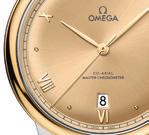




SPEAK
LANGUAGE OF THEIR OWN
WORDS DEBBIE HATHWAY


Ryan Gosling may have stolen the show with his I’m Just Ken performance at the Oscars, but he rocked the BAFTAS red carpet with a bespoke TAG Heuer Carrera Chronograph 39mm. It has an 18kt 3N yellow gold case and a gold Milanese bracelet. POA, TAG Heuer Boutique, Sandton City, V&A Waterfront, Gateway Theatre of Shopping; tagheuer.com












Golden Globe winner
Anya Taylor-Joy wore the 101 Reine with silvered opaline dial and 110 diamonds from the Jaeger-LeCoultre 101 collection. POA, jaeger-lecoultre.com



Valérie Messika’s Lucky Move collection is inspired by talisman jewellery pieces and filled with colour. The bracelet in pink gold and diamonds is decorated with turquoise. POA, bhhboutique.co.za; messika.com
You can never go wrong with a classic like the Cartier Trinity –three rings loaded with meaning and sentiment reimagined in the centenary year of their design. POA, cartier.com










GEMSTONES
Ellis Mhairi Cameron interprets the untold stories of her Scottish heritage in the Legacy collection. Inspired by medieval Scottish jewellery hoards, the X OOAK Fancy Yellow Diamond Legacy Cocktail Ring features diamonds set into a softly distressed band, reminiscent of buried treasure. £9 995, ellismhairicameron.com

This model for Arthur Arbesser ’s fall ‘24 apparel collection wears statement earrings featuring coloured glass, crystals, and stones mounted on lightweight brass wire.
SCULPTURAL
Louis Vuitton’s Skin Necklace from the Deep Time Chapter II High Jewellery collection features 83 Umba sapphires sourced from the Umba River in Tanzania, giving the stones their unique orange and pink colours, with diamonds set in pink gold and platinum. POA, louisvuitton.com






YELLOW GOLD
The timeless metal is big again, and few make yellow gold jewellery better than the Italians.
Fope Flex’it Luna bracelet, R167 000. Available at Charles Greig: Hyde Park Corner, 011 325 4477, V&A Waterfront, 021 418 4515
FROMSCULPTURALSTATEMENTS TO TIMELESS DESIGNS, THIS YEAR’S VICENZAORO – EUROPE’S LARGEST SHOW DEDICATED TO GOLDSMITHING ANDJEWELLERY –
FEATURED WEARABLE TRENDS TO SUITENDURINGPERSONALSTYLE
WORDS DEBBIE HATHWAY




















Domenico Dolce and Stefano Gabbana, renowned for their innovative designs, have once again reimagined style and sensuality, creating a collection that epitomises a new image of luxurious sensuality.
Drawing inspiration from their Sicilian heritage and embracing both masculine and feminine elements, the collection – which showed earlier this year at Milan Fashion Week –is lavish, yet refined.

A striking contrast between seduction and discipline, the collection – titled Woman – revealed a new side to the brand’s DNA. Tailoring, a black and white palette, interesting proportions, and opulent textures in the form of chi on dresses, sheer corsets, peek-a-boo blouses, and opaque or perforated stockings, are some of the key features.






Illuminating the collection were the powerhouses who modelled the clothes, including Irina Shayk, Ashley Graham, Stella Maxwell, and Mona Tougaard, culminating in a finale featuring the incomparable Naomi Campbell. The Dolce&Gabbana SS24 Woman collection is available in stores.











THE DOLCE&GABBANA SS24
COLLECTION – NOW IN STORES – PAYS HOMAGE TO OLD SICILY AND CAPTURES
THE ESSENCE OF A CONFIDENT AND SEDUCTIVE WOMAN

The iconic Dolce Jacket appears in three versions (short, medium, and long), while oversized, masculine jackets with pronounced shoulders –sometimes characterised by large lapels – provide a striking contrast to the lace and lingerie.










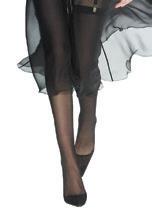












In 1924, when Louis Cartier – one of three Cartier brothers and grandson of the brand’s founder, Parisian watchmaker Louis-François Cartier – created a ring that intertwined bands of yellow, rose, and white gold, it’s unlikely he expected it to become one of the brand’s legacies and a globally recognised symbol.
Today there are many interpretations of Cartier’s Trinity Ring, but it’s widely recognised as a symbol of the woven bonds between fidelity, friendship, and love. And while the likes of Grace Kelly, Gary Cooper, French poet Jean Cocteau (who famously wore two on his left pinkie, one on top of the other), Princess Diana and more recently, Kylie Jenner, have given it celebrity status, it is, as the brand says, “made for everyone – famous or not – with no age limit, without boundaries, with no need to conform, designed for everyone, with no taboos. It is a universal icon that weaves bonds of love into everyday life and whose codes have become Cartier’s signature.”
Royalty and A-listers aside, the success of the ring undoubtedly lies in the simple and timeless design of balanced proportions and clean lines – a brave departure from jewellery design conventions at the time when elaborate gems were synonymous with high society.
As with any icon, the Trinity has undergone reinventions and interpretations over the years ensuring its relevance in the 21st century, but the trilogy of white, yellow, and rose gold remains.
CARTIER’S ICONIC TRINITY RING –CELEBRATED FOR ITS TIMELESS DESIGN AND DEEP SYMBOLISM – IS IN ITS CENTENNIAL YEAR. YOURLUXURY AFRICA’S INGRID WOOD WAS IN PARIS FOR THE LAUNCH OF THE LATEST TRINITY COLLECTION
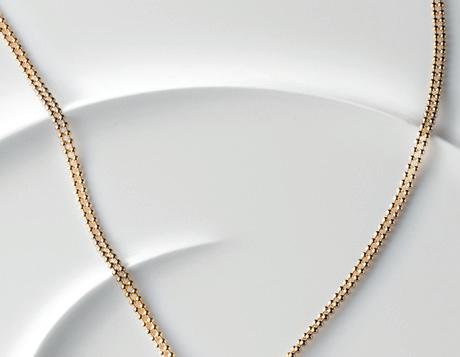



To celebrate a century of the ring, an XL version of the three wrist bands has been launched together with a pendant, while new designs



of the ring include a cushion-shaped version, in which the square bands slide as e ortlessly over each other as the round one. The rings come in the classic size or large, and either in the gold trio or with pavé diamonds. And then there’s the star of the centenary show: a modular version, which can be worn as one wide, large band, or shifted to reveal diamonds.
“The modular Trinity takes a counterintuitive design approach: construction then deconstruction,” says Marie-Laure Cérède, director of watchmaking and jewellery design at Cartier. “We envisioned the Trinity bands interlocked as one structure, and then designed in reverse to deconstruct them into three. This naturally creates multiple ways to wear the ring, which makes this Trinity so contemporary and adds to its universality. Wear the ring fused together for a discreet day look, then unravel the bands to reveal the diamonds at night.”
“We aimed to capture the essence of the original, but with a unique and incremental creative recipe,” explains Marie-Laure of the 2024 collection, which was launched In February to media and celebrities at three events in New York, London, and Paris.
“To redesign Trinity, we started at the beginning: three golds, made into three independent bands yet joined inseparably: three from one, and one from three. Plus, the emotion that emanates from their rolling dance,” says Marie-Laure.
Looking back at my time in Paris, the fascination to me lies both in the simplicity of the design –an elegance that makes a quiet statement – and the complexity of the precision required for such harmony. The fluidity that allows for the ‘rolling dance’ is poetic – one can’t help but play with the shifting bands as they slide over each other, overlapping, merging, always recomposing into one ring, but never the same. ■



Sensai Lasting Plump Lipstick in LP12 Brownish Mauve. R800, woolworths.co.za



RVB Lab Matt & Velvet Lipstick in Bordeaux. R405. orleanscosmetics.co.za









Chanel Rouge Allure Velvet Nuit Blanche in In Purple. R1 075, Chanel Fragrance & Beauty Boutique








Sisley











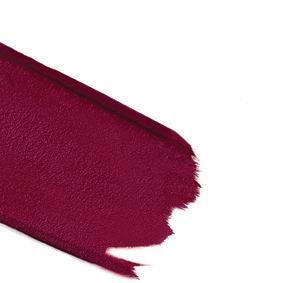

EMBRACE THE CHANGE OF THE SEASON AND INDULGE IN RICH BERRIES, PLUSH PLUMS, AND A LITTLE LATTE, OF COURSE
COMPILED BY INGRID WOOD

RVB Lab Mono Powder Matt Eyeshadow 19 in Cappuccino. R525, orleanscosmetics.co.za
yourluxury.africa




CLEAR YOUR CART AND UPDATE YOUR AUTUMN STYLE WITH THESE LEADING ONLINE STORES
COMPILED BY SANDISO NGUBANE









1. Frances v.H mohair knee-length cardigan, R4 700, merchantsonlong.co.za 2. Khotso Motsoeneng jacquard knit, R5 750, merchantsonlong.co.za 3. UNI FORM made-to-order relaxed fit cotton flap shirt with extended cuffs, R5 789.40, industrieafrica.com
yourluxury.africa

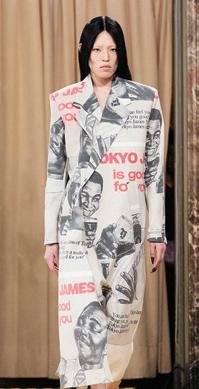

WORDS KOKONA RIBANE
A marriage of history and style takes centre stage in men’s fashion this season. Louis Vuitton’s latest menswear collection by creative director Pharrell Williams, featured parfleche blankets and Dakota flower scarves created with artists and artisans of the Dakota and Lakota nations. Also on the runway, French designer Olivier Rousteing celebrated African high fashion with sweaters serving as a canvas for talented African artists and artisans.
Luxury fashion brands such as Max Mara and Bottega Veneta have embraced the allure of natural colours over vibrant prints and hues. Partly inspired by the clean lines worn by Kendall and Shiv in the final season of Succession, the look marries simplicity and sophistication, quality and restraint. Local designer Keneilwe Mothoa’s Neimil and Copenhagen-based brand Mark Kenly Domino Tan and Loro Piana also celebrate the power of understatement, while Loro Piana also favoured muted tones.

Gone are the days when young designers were relegated to the backwoods – emerging brands are attracting editors, influencers, buyers, and fashion lovers. Labels to watch include African luxury designer, Shelley Mokoena of Connade, and Nigerian-based Abiola Olusola. Burgeoning brands like London-based Feben and Nigerian-British designer Tokyo James are also notable new names to watch.
ABOVE LEFT:
New star on the block, Tokyo James, explores modern human behaviour in his designs
ABOVE MIDDLE:
Abiola Olusola is a luxury African brand on the cusp of global success
ABOVE RIGHT:
Shelley Mokeona’s Connade is quintessentially feminine
RIGHT: Loro Piana opted for earthy tones in its men’s collection
FAR RIGHT:
Local designer Keneilwe Mothoa’s brand Neimil shows colourless sophistication



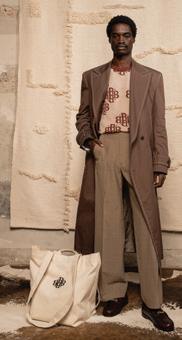
FAR LEFT:
Polo’s vegetabletanned leather Delta Business Case
LEFT:
The Boyde heavy canvas tote bag by Samkelo Boyde Xaba
The height of sophistication this season is complemented by oversized handbags and totes designed to meet our tech needs. These bags are not just accessories, they seamlessly merge form and function, reflecting practicality without sacrificing essential style.
HOW THE FOUNDERS OF THE FORMIDABLE FASHION HOUSE, BUDISM COUTURE, ARE TURNING THE IDEA OF THE FASHION CAPITAL ON IT’S COIFFURED HEAD FROM THEIR CAPE TOWN ATELIER
WORDS NTOKOZO MASEKO


Buildings, like man-made witnesses with windows for eyes, are the perfect keepers of history when they’re well made. In early 2022, a 240-yearold Cape Town building at Heritage Square on Bree Street saw new owners quietly move in. With only five previous owners, it’s served as a wine storage facility, a general store, and a film advertising office. “Researching this unique building and going through the full heritage-approval process was incredibly interesting, as it taught us so much about Cape Town’s history,” says Philipp Althof, one half of the dynamic duo behind Budism Couture, a fashion house which specialises in one-of-a-kind hand-embroidered gowns, daywear couture, and accessories. “Engineers found 240-year-old lobster shells when they dug the foundations. That was once the cheapest food available. Imagine a quick walk to the sea shore at today’s Strand Street – a mere 100m away – grabbing a lobster from the rocks, and grilling it using the neighbouring blacksmith’s coal,” he says. The oldest surviving grape vine in South Africa – estimated to have been planted in the 1770s – hangs in the courtyard of the square with its restaurants, shops, and an unassuming haute couture house. This kind of detail is the exact thing that brings Philipp to life –as I’ll repeatedly witness during my day at the Budism Couture atelier, which also serves as their head office and a private client showroom. The other half of the business, creative director Budi Adji, attaches a more sacred meaning to the space, which comprises 750sqm over four levels. “For me, the number 88 signifies luck, and having an address of 88 Bree Street in 8000 Cape Town is an added bonus,” he says. Budi is among a handful of young designers who’ve bypassed the allure of mainstream fashion, choosing instead to keep alive the old vocation of true haute couture. And he does so from the southern tip of Africa –not Paris – a decision the two founders made based on Philipp’s attachment to Cape Town, where he grew up. This connection, as well as their keen observation of nuanced cultural aspects, were the nudging clues that this city could make an ideal site for a globally competing fashion house.
Philipp and Budi met in Singapore 23 years ago, when Philipp had just started his first job after obtaining a degree in business and finance. In the time preceding the 2014 founding of Budism Couture in Hong Kong, Budi completed his fashion studies at Central Saint Martins in London. “Our journey has taken us from Singapore to Shanghai, London, Zurich, and Hong Kong, and now to Cape Town,” they recall. “People on this continent are
incredibly creative – you find elements of design and creativity everywhere. When we first pitched the idea of moving to Cape Town to our Parisian ateliers, they all said we were crazy. We explained more, and they told us that if we don’t do it, someone else will,” Philipp recalls.
Aside from being the unofficial ambassadors of their new home city and country, Budism Couture is foremost a bastion and refuge for those who appreciate the step-by-carefully-measuredstep dance that is haute couture. “I believe in the age-old tradition of savoir-faire and couture. It’s not just the final product that should impress, but also the painstaking artisanry and skills associated with real haute couture,” says Budi.
We ordered coffee from one of Cape Town’s best coffee shops, Rosetta Roastery, a stone’s throw from Budism Couture’s handcrafted gates. When the coffee was delivered, the wrought iron gates, reminiscent of Europe’s grand cathedrals, automatically shut with a silent thud, blocking out the noise of passing cars and enveloped us in the most poetically coincidental sounds of Laurent Sakura’s Lost Rose. The black metal gate is a locally welded creation featuring 400 laser cut leaves and 80 steel roses, hand-forged by an artisan working out of a shipping container in rural Michigan in the USA. “I found the guy who


“I believe in the age-old tradition of savoirfaire and couture. It’s not just the final product that should impress, but also the painstaking artisanry”
made these roses on Etsy,” Philipp tells me. “In typical American style, he shipped the steel roses in a wooden box labelled ‘ammunition’ – imagine our horror when Fedex and US customs detected some traces of gunpowder and started questioning us,” Budi exclaims. A 350-year-old fanlight made of Burmese teak, which heritage experts declared as the building’s only salvageworthy part, was stripped of decades of paint to reveal the original wood, which now sits atop the iron-rosed entrance.
Steaming cups in hand, we left the ground floor behind with its herringbone oak parquet floors, white panelled walls, locally sourced art pieces, and select furniture, which includes Rich Mnisi’s sheepskin Vumboni sofa as centre piece in the private showroom. We climbed the building’s pièce de résistance –a striking sculptural staircase inspired by the humble ribbon, brought to life by the expert touch of Peerutin Architects.
Ascending one flight of the winding Guggenheim-esque staircase, we arrive at the nerve centre of Budism Couture –the atelier. A range of exquisite imported fabrics and swatches are kept here, many of them custom-made and exclusive to the brand. “We use materials on the inside of gowns that other houses would only use on the outside. We pride ourselves in using only the best,” Budi says. “If something isn’t readily available – or doesn’t exist – we’ll go the extra mile to source it, or develop it from scratch,” he adds.
A Budism Couture creation can be made in a matter of weeks or take up to nine months. Clients from Asia, Europe, the Middle East, and of course South Africa are offered optimum personalisation, the hallmark of luxury. One dress took more than 3 500 hours of embroidery to create, featuring thousands of miniature flowers with moving petals made from over 250 000 sequins. Another was made from the world’s lightest fabric; which Philipp quickly whisks off a shelf and throws in the air to demonstrate its remarkable lightness. While the sheer fabric slowly slices through the air with candyfloss softness, Budi explains, “This is the lightest woven fabric in the world,” while Philipp animatedly chimes in, “It’s digitally woven because no needle can weave this finely. It was originally developed for water filtration and can filter down to bacteria level. A dress made with this will weigh six grams in total… imagine that,” he says, visibly enthused by innovative originality.
The topic of Western presence descending on Africa with agendas to extract and export cannot be skirted around, and Philipp and Budi are clear on their intent. Having seen the handiwork of locals, they felt the same hands that bead intricate crafts can

be taught to transfer their skill to the world of haute couture. They already travel around the world sourcing materials and maintain relationships with centuries-old factories that produce for France’s haute couture houses – Paris would have been an obvious choice as a base if ulterior motives existed.
They also knew about the once-thriving textile industry in Cape Town, and in a bid to revive artisans exiled to obscurity by the industry’s demise, went to movie-like lengths that involve calling on a Bo-Kaap Imaam and relying on an inquisitive car guard to trace legendary talent, in this case a 59-year-old artisan. After losing her job at a textile company, she was making matric dance dresses from her home when the duo came knocking. Now the lead artisan at the ‘laboratory’, as the atelier is sometimes referred to, she spends her days in its quiet company. Three other local artisans all dressed in pristine white lab coats also call the space their professional home.
Their talent pool expands further across the globe. A garment can go from a sketch in Cape Town, to Indonesia for digital mapping of the fabric, on to Paris for embroidery work, then back to Cape Town for its refined finishing under the eye of Budi. This, he believes, is the money-no-object realm in which his clientele expect to live. “Some people might ask about the price tag. Why wait for four months for a dress? But these are clients who have shopped everything in terms of ready to wear. They progress onto the next level where whatever’s available for everyone else is not satisfactory, and want something no one else has. That’s where haute couture comes in. We work with our fabric suppliers to create one-off prints, and we source the impossible,” Budi elaborates.

After a day spent amongst the decadent detail that underpins the makings of a contemporary couture house, I’m struck by the considered pace at which the brand’s first 10 years have unfurled. In a time of Instagram immediacy –a phenomenon that can perceivably speed up public regard at breakneck pace – here is a brand building its home in the most unlikely but bourgeoning design hub on the African continent, sticking its flag on lesser travelled ground – that of one meticulous stitch, one spectacular gown, and one converted couture lover at a time. ■


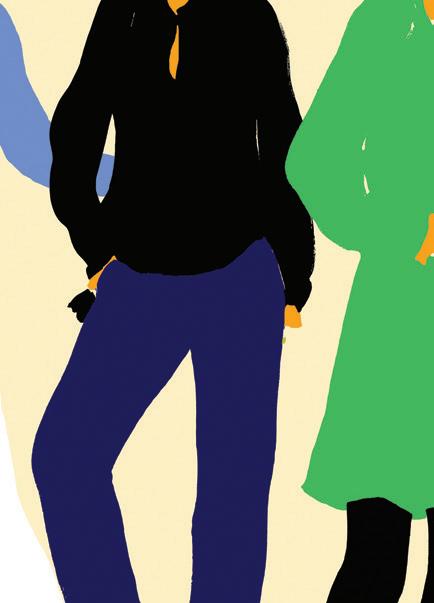

When Madame Clicquot took over the House of Veuve Clicquot after the death of her husband in 1805, women did not have the right to work or even hold a bank account. She sought change and over the years fearlessly defied norms to transform an entire industry.
To mark its 200th anniversary, Veuve Clicquot chose to pay tribute to the Grande Dame of Champagne and her tenacious, enterprising spirit, and in 1972 created an award to celebrate women who embody her essence.
To date, the Bold Woman Award and Bold Future Award have honoured and featured more than 450 female founders and CEOs across 27 countries, not only applauding their leadership, but also providing laureates with recognition on a powerful platform and access to an inspiring global community. In turn, these bold women inspire and motivate future generations of female leaders. The South African edition of the
SUCCESSFUL BUSINESS LEADERS AND ROLE MODELS ARE INVITED TO ENTER THE PRESTIGIOUS 2024 VEUVE CLICQUOT BOLD WOMAN AWARD VIA VEUVECLICQUOT.COM
2023 Bold Barometer by Veuve Clicquot shows that 72 percent of aspiring women entrepreneurs can name a local female role model. This finding underscores the vital role of the Bold by Veuve Clicquot programme, which sets out to fortify a sustainable future for businesswomen globally through impactful initiatives that inspire mentorship and collaboration. The data for the 2023 Bold Barometer by Veuve Clicquot was collated from more than 49 000 people surveyed in 25 countries, contributing to a powerful overview of female entrepreneurship globally.
To connect with this community of inspiring female entrepreneurs across the globe, Veuve Clicquot has created the Bold Open Database, a collaborative platform that offers social and economic development opportunities for the women’s entrepreneurship landscape, irrespective of cultural, geographical, or technological barriers. To register and start engaging with like-minded entrepreneurs, visit boldopendatabase.com/en

• In order to qualify, Bold Woman Award candidates must be founders or CEOs of a company for more than three years, have demonstrated transformation and evolution in their field, and supported growth for at least two years while maintaining an ethical approach to business.
• To qualify for the Bold Future Award, candidates must be the founders or CEOs of a company that has been in existence for less than three years. In that time, the candidate must have made a significant contribution to the success of their company by instilling a sense of entrepreneurship and to transformation in an existing market, while bringing ethical change to the company.
• Three finalists in each category will be selected by an esteemed panel of judges and invited to attend the Bold Woman Award ceremony on 17 July 2024, where one laureate in each of the categories will be chosen. The Bold Woman Award winner will travel to Reims, France, to experience the history, tradition, and luxury of Veuve Clicquot.
• Applicants must be an official resident of South Africa and the business must be based in or operating in South Africa.
• To enter, complete the form on veuveclicquot.com. Entries close on 30 April 2024.
yourluxury.africa














IFOLLOWING HIS VISIT TO SOUTH AFRICA, CEO OF DOLCE&GABBANA, ALFONSO DOLCE, CHATTED TO US EXCLUSIVELY ABOUT HOW THE PAST AND FUTURE MANIFEST IN THE PRESENT AT ONE OF THE WORLD’S BIGGEST LUXURY BRANDS

WORDS NTOKOZO MASEKO















n his role at Dolce&Gabbana, Alfonso Dolce holds invaluable institutional knowledge on the DNA of the brand. He’s been involved from the beginning when two young designers, Domenico Dolce and Stefano Gabbana, decided to merge their love of beautiful things into a luxury fashion house. Four decades on, Alfonso is no staid member of the old guard – instead he’s the pulse of innovation and change sweeping through the Milano head o ce corridors, the e ects of which reverberate on runways and boutique racks around the globe. He talks to us about how company culture, human-centric innovation, and the cornerstone of tradition continue to drive one of the world’s biggest names in luxury into an optimistic future.



















YOU’VE BEEN PART OF DOLCE&GABBANA SINCE ITS ORIGINS IN 1984. WHAT WAS YOUR ROLE IN THE EARLY DAYS?
I had the pleasure of working closely with Domenico and Stefano from the beginning. In 1987, I moved to Milan to follow the development and transfer of production and organisational activities. Since then, I’ve taken on increasingly strategic positions, and now I am CEO of the group.
HOW HAS THE BRAND ENSURED CONTINUITY OVER THE YEARS?
Our teamwork approach involves older generations working alongside younger ones. The energy and skills of the new generations, which include technological innovations, combined with the wisdom and patience of the masters, allows the company to innovate and support the generational transition, protecting human capital. It is natural that the life of a corporation is made of ups and downs, or of greater and lesser recognition. We communicate regularly with our local offices to help us better understand the needs of each market.
WAS IT CLEAR FROM THE BEGINNING THAT IT WOULD BE A FAMILY BUSINESS?
The guidance of the family has never impeded the presence of managers in their positions. The desire has always been that of a cohesive and mixed team – founders, family, and management. We are working on a natural succession, which starts from the founders, towards a new model of entrepreneurial managers, allowing us to maintain creative freedom and corporate ethical values.
HOW WOULD YOU DESCRIBE DOLCE&GABBANA’S WORKING CULTURE AND PHILOSOPHY?
Domenico and Stefano created a dream based on a clear idea: to give soul to their products and spread the Italian culture of beauty and something done well around the world. The idea is to make people appreciate Italy not only when they visit our country, but also when they discover its values through our products.
HOW DOES THIS SENSE OF TRADITION CO-EXIST WITH INEVITABLE CHANGE AND INNOVATION?
Tradition and innovation are the two founding elements of Dolce&Gabbana’s thinking. For us, tradition means respecting know-how. When we think of a product, we want to make every part the best it can be so that when put together, its parts are as important as the whole. At that point, the product ceases to be just a product and becomes a lifestyle, a dream, a sense of belonging. Through innovation, we want to enhance tradition by humanising work, as people’s work is more important than the use of technology to create it. The goal is to enable people to work in spaces where technology adds value.




“Human beings need emotions, and this is true in our work: it is forbidden to be repetitive”
DESPITE THIS INHERENT “ITALIAN-NESS”, PEOPLE FROM ALL OVER THE WORLD RESONATE WITH THE BRAND. WHAT MAKES IT SO UNIVERSALLY APPEALING?
We are clear about our values. Dolce&Gabbana expresses Italy to the world – its traditions, tailoring, and beauty – but also family and love. And the passion for life.
HOW DO YOU KEEP UP WITH A GENERATION OF CONSUMERDRIVEN LUXURY FASHION IN THE AGE OF THE INTERNET?


HOW DO YOU ENSURE VALUABLE SKILLS AND TRADES AREN’T LOST BETWEEN GENERATIONS?
Ten years ago, we started the “Botteghe di Mestiere” project – a professional training course between masters and young talents. It was born from the need to find new professional artisans and aims to transfer the knowledge and technical bases of tailoring to new generations while offering them a concrete possibility of entering the working world. On average, at the end of the training course, 50 to 70 percent of the participants are hired by the company.
TELL US ABOUT THE CONCEPT OF “ITALIAN-NESS” AND HOW IT IS CONVEYED BY THE BRAND.
In our cultural framework, “Italian-ness” is the maximum expression of beauty and the praise of imperfection as a sign of uniqueness and authenticity. Each hand is different from the other, and behind each of our creations is an artisan. Whether the product remains a unique piece, like an Alta Moda item, or becomes a Bialetti coffee maker, its origin reveals a know-how that is consistent with the brand’s values.
A fashion company that focuses more on pleasure and beauty than only luxury must evolve. To do this, it must target both its loyal and future customers, regardless of their age and means. The first mistake is to remain convinced that a way of working that has proven successful is the only right one. Today, there are so many options available that it prevents us from fully experiencing a product or brand. The effect is that the end customers, especially the younger ones, may be more interested in trends than in style. Many young Gen Zers look for a product for satisfaction, but it ends up being disposable. They are looking for the initial experience, but quickly realise that it’s the quality that lasts. Our goal is that quality, together with our ethics and values, are what will satisfy them in the long run.
HOW DO YOU ENSURE THAT DOLCE&GABBANA ALIGNS WITH THE RESPONSIBILITIES OF SUSTAINABILITY, DIVERSITY, AND INCLUSION?
In December 2022, we presented a Sustainability Plan – a precise and structured programme built with a long-term vision around priority. Seven priorities have been identified, and ours is intended to be a path towards a measurable and concrete idea of sustainability that passes through our guiding principles: beauty, creativity, made in Italy, humanity, and passion.
WHAT ARE SOME OF THE MOST NOTABLE INNOVATIONS
RECENTLY IMPLEMENTED BY THE BRAND?
Stepping out of our comfort zone is the Dolce&Gabbana way. We cannot think cyclically as if we are an Artificial Intelligence that detects habits and repurposes what we know. Human beings need emotions, and this is true in our work: it is forbidden to be repetitive. So, in 2021 we started to dress the “box” of the human soul – the home – by launching the Dolce&Gabbana Casa collection. At the end of that year, the company closed its beauty license – a countertrend move in the luxury industry –to bring the business in house. In April 2022, we announced our entry into real estate, collaborating on two residential projects in Miami and Marbella and developing a hospitality project in the Maldives. ■


A TRANS-SEASONAL TALE FOR FASHION FORWARD COSMIC TRAVELLERS
PHOTOGRAPER KITSO KGORI STYLIST THAPELO MOFOKENG




LEFT:
Lukmon wears Vutlarhi shirt, R17 291, and Vutlarhi trousers, R7 289, Rich Mnisi (richmnisi.com); Crystal Birch Billie Bolero in Ivory, R2 150, (therealcrystalbirch.com); Chunky low top sneakers, R16 120, Balmain (Balmain Sandton City, 010 276 0290)
TOP:
Lisa wears Sandra’s Sculpted Karoo Dust, Deadstock Raw Silk Contoured Jacket, R32 800, and Karoo Dust, Deadstock Raw Silk Pencil Skirt with Contoured Details, R17 500, Viviers Studio; Prada Satin Yellow Gold sunglasses, R7 290, luxottica.com; Longines DolceVita with interchangeable brown leather strap, R91 900, Shemer Jewellers, Bedford Centre, (011 622 4735)
ABOVE:
New Dawn Multi-Shape Double Diamond ring, POA, Graff Diamonds, (Delaire Graff Estate, Stellenbosch, 021 885-8160)
RIGHT:
Corset Trapeze Jumpsuit, R42 000, and Nexus Advanced Geometrics X Viviers Studio 3D printed prototype shoes, Viviers Studio; Bulgari Divas’ Dream Necklace in 18kt rose gold set with 3.53ct pink sapphires, 0.81ct rubies, and 0.85ct pavé diamonds, POA, Picot & Moss; Parmigiani Tonda 1950 Lune diamond bezel, 18kt rose gold, 39mm, automatic movement, POA, Picot & Moss at BHH Boutique
PREVIOUS PAGE
LEFT:
Lisa wears Radiating Jewel Tailored Jacket, R35 100, Viviers Studio (viviersstudio.com); Dior Pacific Mask sunglasses, R9 650, Picot & Moss (picotandmoss.co.za, 011 669 0500); Sabbia Pavé Bangle in rose gold, R69 500, M’ama Non M’ama Bracelet in rose gold with Adularia (moonstone gemstone), R37 000, and Sabbia Ring in 18kt rose gold with diamonds, R46 000, Pomellato at BHH Boutique
Lukmon wears ‘Golden Karoo’ Arched-leg Tailored Jacket, R48 000, Viviers Studio; Prada Satin yellow gold sunglasses, R7 290, luxottica.com; Messika Gents Titanium Bangle, R52 000, BHH Boutique
MIDDLE:
Bulgari Divas’ Dream Necklace in 18kt rose gold set with 3.53ct pink sapphires, 0.81ct rubies, and 0.85ct pavé diamonds, POA, Picot & Moss
RIGHT:
Lisa wears Wool Denim Pleated Skirt, R7 850, and Boxy Fit Placket Blouse, R3 750, Mmuso Maxwell (mmusomaxwell. shop); Nine strand fresh water pearl necklace, R150 000, Charles Greig (charlesgreig.co.za, 0800 333 888)
Lukmon wears green linen jacket, R43 000, green linen trousers, R17 250, golf jersey shirt, R24 750, and driver shoes, R16 750, Dolce&Gabbana

yourluxury.africa



ABOVE:
Lisa wears Western Crepe jacket, R53 250, Balmain; 18kt yellow gold crossover ring, R104 000, and I8kt yellow gold multi pearl and diamond necklace, R68 900, Charles Greig
Lukmon wears Kitball Monogram Denim Jeans, R35 000, Louis Vuitton; IWC Portuguese Yacht Club blue dial 44mm watch, R261 000, Charles Greig LEFT:
Lisa wears jacket, R63 000, skirt, R21 000, and bralette, R16 750, all Dolce&Gabbana; Pomellato Catene Necklace in 18kt rose gold, R585 000, BHH Boutique; 18kt pink, white, and yellow gold diamond cuff, 0,67cts, R210 000, Charles Greig
RIGHT:
Jacket, R63 000, Dolce&Gabbana; 4,02cts Fancy Intense Yellow pear shape diamond with white tapered baguette diamond shoulders promise ring, POA, Graff Diamonds
PHOTOGRAPHER’S ASSISTANT/RETOUCHER: JAY RYCO; MAKE UP: SCHOOL OF MAKEUP
ARTISTRY; MODELS: LISA HELENE (ICE MODELS) AND LUKMON JIMOH (KULT MODELS);
PHOTOGRAPHED ON LOCATION AT CONSTANTIA ROYALE VINEYARDS IN CONSTANTIA, CAPE TOWN, CONSTANTIAROYALE.CO.ZA





















IN AN EXCLUSIVE INTERVIEW, MEN’S CREATIVE DIRECTOR OF LOUIS VUITTON, PHARRELL WILLIAMS, SHEDS LIGHT ON THE INSPIRATION, THEMES, AND GARMENTS BEHIND HIS LATEST COLLECTION
COMPILED BY NTOKOZO MASEKO

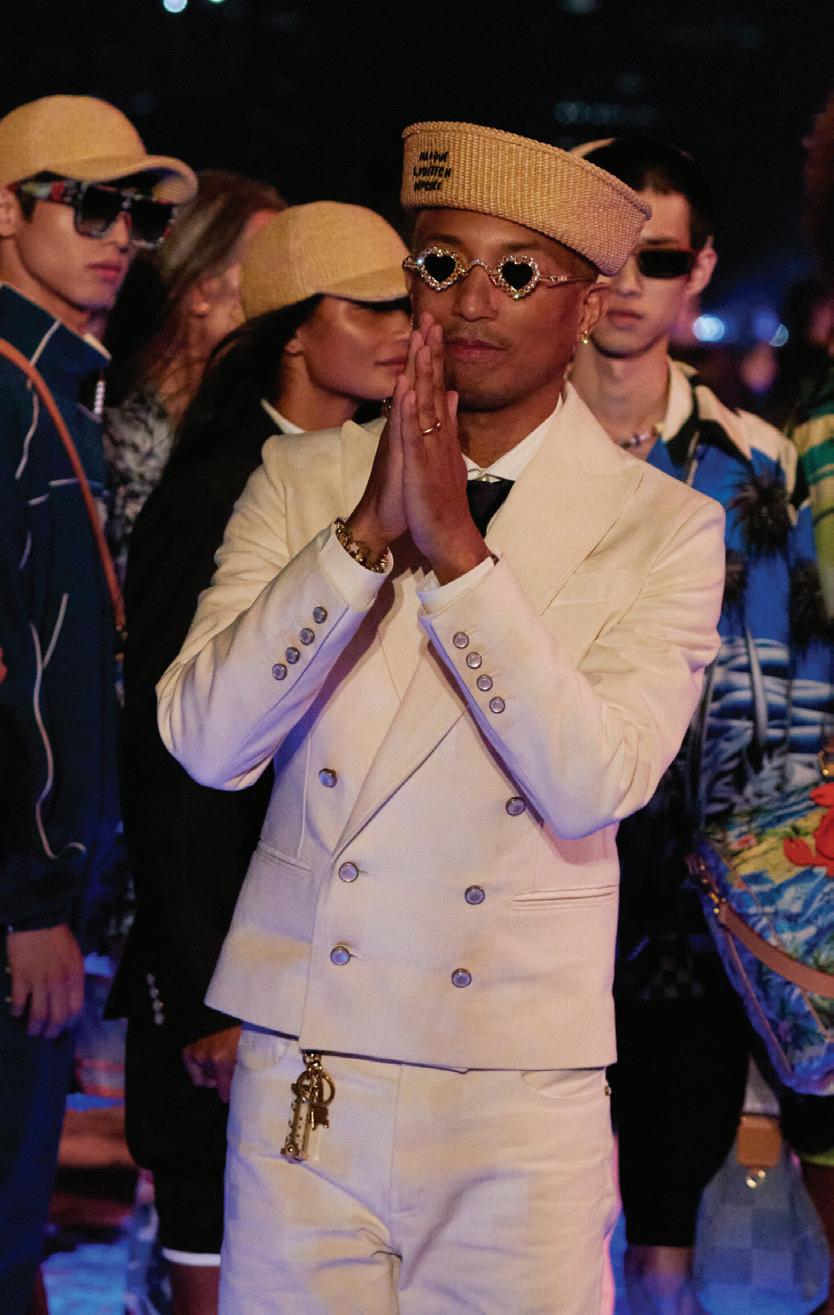

WHY DID YOU CHOOSE TO SHOW IN HONG KONG, AND WHAT INSPIRED THE COLLECTION? Hong Kong is one of my favourite places – beautiful culture, beautiful people, lots of creativity. There’s a wealth of tradition here, some kept closely preserved and some responding to newer influences. It’s an incredibly vibrant place, and I’m a vibrations person. When I started to think about the idea of the show and the vibrations connected to it, it made me think of Hawaii. The energy in Hawaii is amazing. I wanted to merge those two worlds together: from Hawaii to Hong Kong.
WHAT DOES THE TRANSITION FROM HAWAII TO HONG KONG SIGNIFY?
As in the previous show, when we took you from Virginia to Paris, it’s a conduit. It’s making a connection between people and between cultures, where it may be apparent or not.
WHAT DOES THIS CULTURAL CONNECTION REPRESENT TO YOU? Every time there’s inspiration for me, it’s grounded in the sun and the light. In my previous show, I asked, “what will you do when the sun shines on you?” because when you analyse why the sun is shining on you, it should make you rejoice.
AS THE FOCAL POINT OF YOUR DEBUT SHOW, HOW IS THE SUN REFLECTED IN YOUR SECOND COLLECTION? When we have a moment to decompress, we often gravitate towards warmer climates. My relationship with Hawaii is connected to the climate. I love warm weather. It’s very humid. The sun is the greatest source of life, and light itself is energy. Energy is a vibration, and when you go to places where the sun is shining, you feel it in the people. I like that.
HOW DID THESE IDEAS EVOLVE INTO A COLLECTION INSPIRED BY SAILING AND SURFING?
If you weren’t flying from one place to the other, how else would you get there? You’d be sailing. So, one side of it is very sailor-centric. The other side is tropical. I want to give reverence to the surfing culture of Hawaii but also to surfer enthusiasts from Hong Kong. I’ve never actually surfed a day in my life, but I think it’s a beautiful culture. What I see is people riding waves – waves that are caused by the position of the moon and the winds – that’s a crazy connection from an ethereal point of view. How often do we get to ride waves as human beings?
HOW DID YOU ENVISION THE STAGING OF THE SHOW? Watching The Love Boat as a kid, I used to think the lighting was amazing. It was this beautiful concord blue and grape vibe. Like blueberry. And the clouds were always so Da Vinci white and silky. I wanted to introduce some of that light into the collection and how we show it, bathed in the light of the wave-maker – the moon – on the Avenue of Stars.

OPPOSITE & ABOVE:
Pharrell Williams’ Louis Vuitton 2024 pre-autumn men’s collection showcased in Hong Kong and was an ode to surf and sailing culture, lunar power, and the inimitable sun

THESE ELEMENTS ARE ALL EXPRESSIONS OF THE NAUTICAL THEME OF THE SHOW. HOW DID YOU APPROACH THE COLLECTION’S NAUTICAL THEME?
On the sailor side, I looked at their informal wear – what they wear on deck – but also the formal items they wear when they’re representing in public. Within that silhouette, I mixed in a lot of my code language: bootcut sailor trousers, doublebreasted sailor-inspired jackets, chambrays, and of course denim. There’s some scuba as well. And then it dives deep into embellishments and embroideries.
HOW DID YOU APPROACH THE COLLECTION’S SURFER THEME?
The prints are inspired by those of tropical floral shirts typical of Hawaii, but are also dedicated to surf life. We adapt those same prints from shirts into formal wear – double-breasted suits with bootcut trousers –and luggage in the same print. We really went there. I did the soundtrack, Airplane Tickets with Swae Lee and Rauw Alejandro, performed by fifty ukulele players. We worked on a strong local casting, and used Hawaiian models and surfers.
HOW DOES THIS SHOW REFLECT YOUR BROADER INTENTIONS AT LOUIS VUITTON?
As long as I’m here, the sun will be a continuous theme. At the end of the day, it’s about humanity. Always. That’s who makes the clothes, who wears them, and who inspires them. ■
yourluxury.africa
yourluxury.africa
















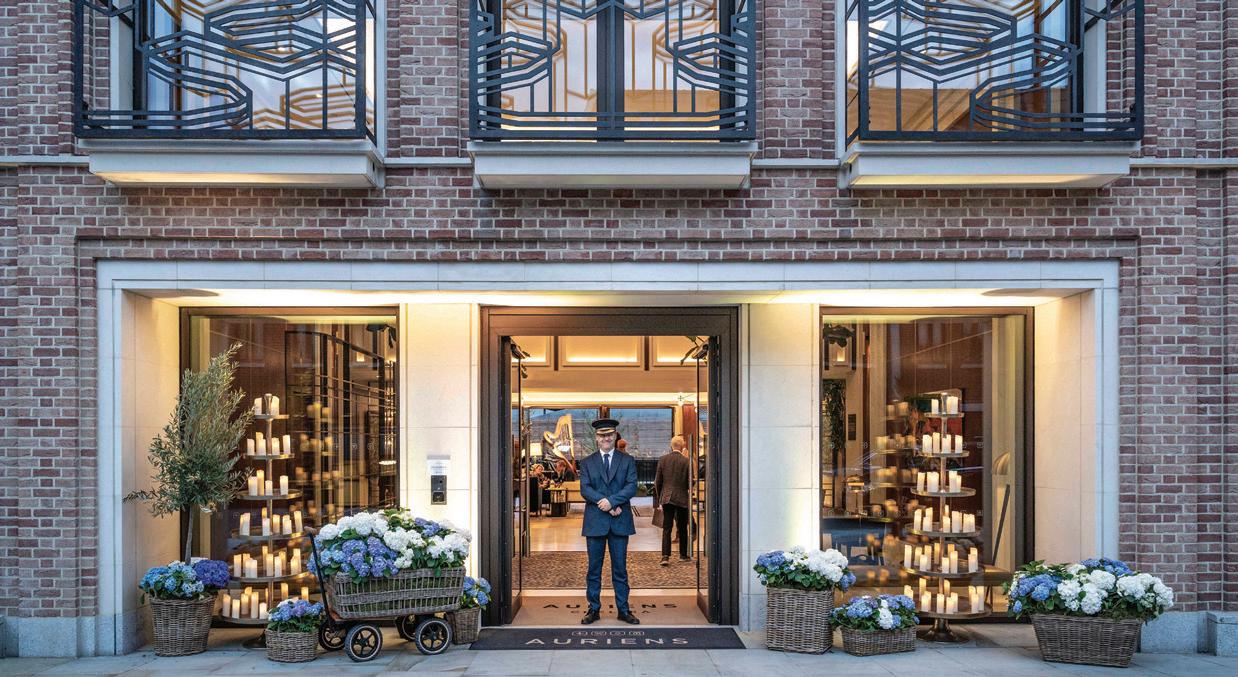





IWHETHER YOU’RE READY TO RETIRE OR SEEK TO INVEST IN YOUR FUTURE, AURIENS CHELSEA HAS REDEFINED THE CONCEPT OF LUXURY LATER LIVING IN THE HEART OF PRIME LONDON
n response to the global demand for luxury later-living residences, Auriens Chelsea in London has emerged as a prime destination for South Africans looking to live and invest in unparalleled prime communities.
Located in the heart of Chelsea and overlooking the King’s Road with its charming boutiques, high-end restaurants and cultured atmosphere, Auriens is more than a chic residential address –it embodies a sophisticated lifestyle that transcends generations.
With an “Age in Place” philosophy at the heart of everything Auriens is, the practical design of the building and services help make residents’ lives easy and enjoyable, anticipating their evolving needs. According to director of Auriens Henry Lumby, “Auriens Chelsea sets the gold standard in later living.
It provides the finest apartments, hassle-free living, and a warm and welcoming community of like-minded individuals.”
In addition, a top chef, chauffeur, and concierge are on call. “The Auriens team are drawn from the best five-star hotels in London, such as The Savoy, and all work with the common aim to give and support the residents with world-class services. In London, if not the world, there simply isn’t a more exclusive and luxurious later-living community,” adds Henry.
Top-notch security is prioritised to ensure peace of mind, and housekeeping and maintenance teams are available if required. On-site facilities include a wellness centre with a 15-metre pool, gym, and spa. In addition, community areas include a restaurant
yourluxury.africa
with private dining and a wine room, two bars, a cinema, library, and a lovely courtyard garden.
Angelique de Rauville, CEO of Handful of Keys, partner to Auriens, says, “As a premier provider of bespoke lifestyle solutions, we are delighted to align with Auriens, setting a new standard in sophisticated, modern later living. As a local resident, this has been an exceptional addition to the area.” She adds, “Auriens offers a desirable living experience to discerning real estate owners and residents. It is the epitome of quality independent living, and we aim to inspire and elevate expectations within this exclusive community.”
There are a range of apartments available, with a one-bedroom starting price of £2,75m. It is an ideal opportunity for discerning South Africans entering the next chapter of their lives. auriens.com

NEW WORLD WEALTH NAMED SOUTH AFRICA AS A GLOBAL PIONEER IN ESTATE LIVING, AND OUR RECENT VISIT TO STEYN CITY IN GAUTENG DID MUCH TO CEMENT THIS OBSERVATION







Anyone who’s lived in a big city knows the fast-paced existence fuelled by commercial ambitions and high-octane social calendars, as well as the diminishing square meterage that often comes at a premium. Our visit to Gauteng’s premier city-within-a-city does much to dispel the expected. Steyn City resolves the age-old tug of war of countryside peace versus inner city convenience, of rest and relaxation versus competitive participation in the economy, and of lock-up-and-go apartment living versus expansive freehold surrounds.
In its Africa Wealth Report, global wealth intelligence firm New World Wealth described Steyn City as “probably the best designed estate in South Africa, with its large amounts of beautiful indigenous parkland between distinct residential neighbourhoods offering a mix of houses, clusters and luxury apartments.” And the luxury doesn’t stop there.
At either one of the two entry points into the 2 000-acre luxury residential estate, the stress of city living instantly dissipates, thanks, in part, to the seven entrance and seven exit lanes at each gatehouse that loosen the clutch of traffic. Two new roads are currently completing connections between east and west, and south and north, connecting Winnie Mandela Drive to the N14 highway to Centurion and Pretoria, making Steyn City a major node.
We arrive at the Winnie Mandela Drive side of the estate, and cranes and scaffolding interrupt the skyline to our right where building activity is underway at the estate’s flagship apartment development, City Centre – a collective of luxury apartments built as intimate villages, each clustered around a leafy piazza. Where apartment living, even on an estate, often comes with limitations in terms of space, amenities, and privacy, City Centre offers young professionals, small families, property investors, and semi-migrators who travel regularly a unique blend of luxury urban living.
At Steyn City, apartment residents have access to everything the estate offers to freehold property dwellers – and the list is impressive. Aside from the on-site restaurants, coffee shops, gym, office park, and Helistop, many nuanced touches stand out. The absence of unsightly and unwelcoming high walls is immediately noticeable and there is a real sense of freedom from the plagues of city realities in South Africa. Instead, endemic trees form natural boundaries of greenery between all the home types, and the ingenious landscaping design ensures that unexpected pockets of lush greenery also draw through to City Centre. Pockets of plant life are perfectly placed in the underground parking – not your usual spot for greenery – and walkways leading from the basement parking to the various apartments show vibrant signs of lushness, with varied dimensions and each piazza with its own green space, serving as attractive communal areas.
Few apartment dwellers can boast access to conveniences such as a web of interconnected walkways that automatically light up at sunset, a custom-designed 50km mountain bike track – the track of choice for official races like the 94.7 Ride Joburg MTB race – yoga sites with built-in, one-of-a-kind outdoor mats, secluded outdoor gym stations with basic equipment (there’s an indoor gym with sweeping views of the estate, too), more than 40 outdoor sculptures, a man-made creek that runs through the estate, and dams attracting prolific bird life. You’ll also spot impala, springbok, and even jackals around the estate.
Other state-of-the-art facilities on the premises include a school, a 300m lagoon that makes one think of a holiday resort in Cancun, an equestrian centre, padel courts, and an 18-hole Nicklaus-designed championship golf course. All these perks come in an allencompassing package that presents itself in one of Africa’s most influential economic and cultural hubs.
• One, two, three, and four-bedroomed apartments are available for purchase.
• Purchasing prices range from R2,7 million to R35 million.
• Interiors belie the exterior, and once inside the feeling of space is maintained with high ceilings, wide passages, and bedrooms big enough for king-size beds.
• There’s a pleasing balance between open-plan spaces and separate living areas in the larger units, which offer separate television lounges, home offices, and spacious patios for entertaining.
• All kitchens have state-of-the-art blu_line kitchens, fitted with integrated Gaggenau appliances in phase one.
• Penthouses and larger residences (with four bedrooms) have lift access directly into the home.
• The City Centre is equipped with a backup generator, water reservoir, and piped gas, while an underground network of tunnels wide enough to fit small vehicles for quiet move ins and deliveries, ensures inconspicuous disposal and collection of refuse.
• Residents have the option to rent storage units in the underground parking area, which has more than 2 000 well-proportioned parking bays.
• Owners of electric cars have a charging station, and all car owners have the convenience of an in-house car wash service.
• Penthouse residents each have glass garages, a novel feature for those with a car collection worth displaying.
steyncity.co.za




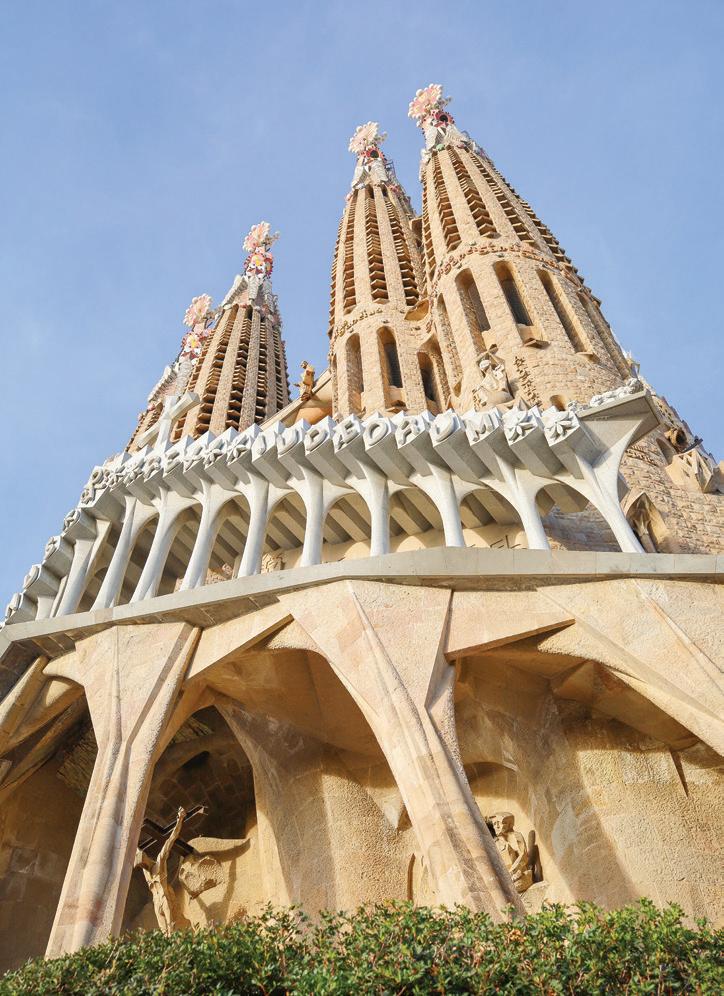


AWITH ITS GAUDIAN ARCHITECTURE, VIBRANT CULTURE, AND CHARMING TAPAS CORNERS, BARCELONA IS THE PERFECT CITY STOP EN ROUTE TO THE MED
WORDS & IMAGES JARED RUTTENBERG



fter passing countless colourful street processions, I asked our guide if that specific day marked some special celebration. He simply smiled, “This is Barcelona – there is always someone or something to celebrate.” A shot of recognition fired across my synapses when minutes later, we turned into one of the squares and I watched people strap bands around each other’s waists. As luck would have it, I was about to witness the traditional Catalonian human castles.
CASTELL CULTURE
In 2010, these Castells were included in UNESCO’s collection of cultural experiences that demonstrate the “intangible cultural heritage of humanity”. This is every bit community driven, as a 10-story tower requires a foundation of around 900 people. Once the enxaneta –the child who climbs to the top – reaches the highest level and raises a celebratory hand, a great cheer erupts from the crowds. These living, breathing towers are more than a daring pastime – they’re expressions of a unifying force for many Catalonians. This region of Spain carries a distinctly singular identity; human towers replace bullfighting, vermouth replaces sangria, sardana replaces flamenco dancing, and fideu replaces paella.

A walking tour is best started at Ciutat Vella (the Old City), venturing outward. The blend of Moorish, Gothic, and Romanesque architecture inadvertently reflects the city’s complex history. This is in contrast with modern Barcelona – and the bustling beach hub of Barcelonetta – a suburb that was established just before the 1992 Olympics, barely 20 years after the Francoist dictatorship had ended.
Be sure that your walk takes in the exceptional concert hall of the Palau de la Música Catalana. If no concerts are scheduled during your stay, you can still visit the ground-level coffee shop and take in both architecture and ambience. With all the walking, the need for sustenance quickly arises, and if, like me, you’re after the city’s best churros to dip in decadent chocolate sauce, the offering at Bar Les Cascades is best. It’s adjacent to the Museu Nacional d’Art de Catalunya, so they are a great reward after perusing the galleries. From here, all the Montjuïc hill sights are easily accessed, including the two cable cars.
Of course, it’s the unique works of Antoni Gaudi that leave visitors to Barcelona enchanted. The greatest of these is the Basílica de la Sagrada Família. Work on the project began in 1882, and when Gaudi died in 1922, only a quarter of it had been completed. In later years, a fire destroyed many of his drawings, leaving teams of architects with the immense challenge of having to finish the work off-plan – which is expected to happen by 2040.
The Park Güell is another Gaudi gem – a series of viaducts and bridges combined with a nature immersion and generous city views, it is a must-visit.
It’s a good idea to book ahead of time for both these attractions as you will then get a time slot and can avoid the queues.
The first of Barcelona’s two iconic avenues is the tree-lined Las Ramblas. This vibrant thoroughfare, which is a kilometre long, is enjoyed by tourists and locals, and you’ll encounter countless flower sellers, maître d’s enticing you into their cafés, and talented artisans punting their work.

When you’re ready for a fashion fix, Passeig de Gràcia is the city’s most wellknown luxury shopping avenue lined with designer stores, restaurants, and bars. The street serves as the retail district and you’ll find every designer store represented, and once inside, you can expect nothing less than VIP treatment. For a taste of local designers, add Ivori, Colmillo de Morsa, and Ailanto to your list.
Barcelona is home to more than 40 markets, and perhaps the best known is Mercado de La Boqueria. Find an unoccupied bar stool and join the locals for a mixed cured meat and cheese cone.
“This region of Spain carries a distinctly singular identity; human towers replace bullfighting, and fideu replaces paella”

Spain is the uncontested home of tapas, and we couldn’t help but gravitate to some of the enticing small-plate eateries in the evenings. The sister restaurants La Flauta and Vinitus were absolute favourites, and just meters away from the Passeig de Gràcia.
Our last tapas escapade was to the highly rated Barriteca. We ordered a selection of tapas, confidently rattling off the list in our best Spanish. Last to arrive was a dish that took some time to identify –a passing waitron announced “aubergine” layers baked in a sweet umami sauce – the hero dish of our trip. I asked the server to please compliment the chef. His face lit up, and he proudly announced it was his recipe. Ferran López happily offered me the verbal recipe of brown sugar, apple vinegar, vegetable soup, peanut, and miso paste. Will I be brave enough to try it at home? Perhaps I may use the excuse that I’ve forgotten the quantities and will have to go back to beautiful, bustling Barcelona. ■
With only six suites, a hotel experience hardly gets more intimate than this. The exquisitely preserved 1906 modernist building is home to balconies with wrought-iron bars, 57 catalogued ceilings, as well as a vintage elevator – a step back in history and understated luxury. elpalauet.com
Still finding its feet (we experienced a couple of teething problems), staying at The Hoxton’s remains a fashionable affair. Expect to find the convivial and cool crowd from London and other capitals draped across the reception rooms or sipping margaritas on the rooftop terrace. thehoxton.com/poblenou
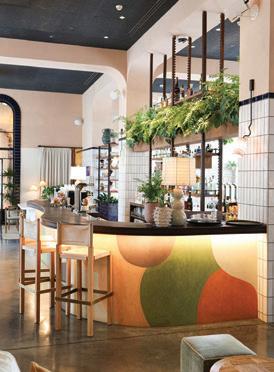


TLOTUS HAS STAYED TRUE TO ITS HISTORIC HERITAGE WITH ITS ALL-ELECTRIC SPORTS CAR – NOW AVAILABLE IN SOUTH AFRICA
WORDS JULIET MCGUIRE
he Lotus Eletre heralds a new era of sports car, where adrenaline meets sustainability. Its curved lines, elegance, and power combine to create a car that continues the Lotus legacy, but at the same time, takes it in an entirely new direction. It may be an eco-friendly drive, but that doesn’t take away from the exhilaration you feel when you are behind the wheel.
Because this segment is incredibly niche and units are not sold in big numbers, Lotus needed a model with a wide appeal. Think Porsche Cayenne and Macan, which also allow the brand to continue to sell the 911. The Lotus Eletre is thus a convergence of 75 years of sports car heritage and an electric future, all rolled into one alluring package. This car appeals to those who value performance, but desire the practicality and spaciousness of an SUV.


At its heart, the Eletre is still very much a Lotus. It carries the DNA of its predecessors –the nimble Emira and the electrifying Evija – but it’s been tailored for a new generation, those who’ve grown up admiring the sleek lines and exhilarating performance of Lotus sports cars but need something that fits a more modern lifestyle.
The name of this car is derived from the Hungarian word “életre” which means “coming to life”. It is an all-electric sports car that comes with a choice of two powertrains. But don’t be fooled by the electric motor – you can expect performance figures such as 447kW and 710Nm. Three different versions of the car are available – Eletre, Eletre S and Eletre R, with the first two accelerating from zero to 100km/h in just 4.5 seconds. The crazy-quick Eletre R will take just 2.95 seconds to complete the same sprint.
Range anxiety is also not an issue as the car can cover distances of up to 600km, model dependant. Unlike a combustion engine vehicle, which converts kinetic energy to heat during braking, the Eletre can recuperate a significant proportion of this because the motors act as generators during deceleration, and that energy then recharges the battery. You can select from two levels of regenerative braking using the two tactile paddles on the steering wheel.
Making the Eletre even more user-friendly, the vehicle offers charging to match its range and performance. All models feature a 22kW on-board charger as standard, and those with a 22kW wallbox at home will be able to fully replenish the battery from 0-100 percent in less than six hours – ideal for overnight charging.
This car symbolises the transformation of a brand known for its racing pedigree and engineering excellence into one that also speaks the language of luxury, versatility, and electrification. It’s a car that’s born British but raised globally, bringing the invigorating Lotus driving experience to a whole new audience.
The Eletre S and Eletre R are available in South Africa, with the Eletre coming at a later stage.
PRICING:
Eletre S: R4 250 000
Eletre R: R4 500 000 ■
ABOVE LEFT & ABOVE: Its dramatic design is sleek, aggressive, and eye-catching, with cues taken from the Emira and all-electric Evija hypercar






Dressed in Funke Adepoju (Nigeria); neck piece by Jiamini (Kenya); dressed in denim by Dina Shaker (Egypt); with her mother and personal hero; in a kimono by Mantsho (South Africa); bag by Kumesu (Democratic Republic of Congo)
YOU PLAY MANY ROLES IN YOUR LIFE. TELL US ABOUT SOME OF THEM… I am primarily the chief creativity champion at the Lulubell Group, but I am also a mother to a 13-year-old boy. My career also includes roles at the United Nations in hospitality, and leading a boys’ mentorship foundation.
WHAT DOES THE CONCEPT OF BEING “IN YOUR OWN LANE” MEAN TO YOU? Embracing authenticity and leveraging my strengths to contribute meaningfully to the world. Despite expectations, I chose a path that aligned with my passions in hospitality and luxury management, fulfilling my purpose of uplifting others through creative and cultural industries.
CAN YOU SHARE A PIVOTAL MOMENT WHEN YOU REALISED WHAT YOUR LANE WAS?
Reflecting on my life as I approach my 50th year, I’ve noticed a pattern: every seven years, I experience a pivotal moment that signifies a shift or awakening to the next phase. These moments aren’t planned, but they’ve occurred with uncanny regularity.
WHO IS SOMEONE YOU ADMIRE, AND WHAT LESSONS HAVE YOU TAKEN FROM THEM?
I admire my mother profoundly for defying the societal norms of her time with her daring spirit, fashion sense, and strong self-identity, which has inspired my own path and work.
HOW WOULD YOU DESCRIBE YOUR PERSONAL STYLE? It’s predominantly African designed because I believe in embodying and promoting the garments I advocate for to international buyers. My wardrobe consists of fashion from across Africa – Nigeria, Mali, Morocco, Ethiopia, Cameroon, Tanzania, Kenya, and South Africa. I enjoy adding unconventional twists to my outfits, such as pairing a Nigerian-made dress with a vintage Japanese kimono. Having alopecia, I sometimes use hats, turbans, and wigs to creatively dress my head.
THE FOUNDER OF LULUBELL GROUP CHAMPIONS
‘MADE-IN-AFRICA’ LUXURY, HELPING THESE BRANDS AND MANUFACTURERS ENTER NEW MARKETS
COMPILED BY MONALISA MOLEFE

ABOVE:
Dressed in Christie Brown (Ghana)
WHICH FASHION TRENDS ARE CURRENTLY ON YOUR RADAR? It’s not about trends for me; it’s about the story behind each piece. I wear clothes from makers I know, connecting with the garment’s heritage and cultural origins. I use my attire to inspire dialogue and change Africa’s narrative.
WHAT SHIFTS DO YOU SEE IN TODAY’S FASHION INDUSTRY THAT WILL DEFINE THE FUTURE? The growing consciousness in fashion. People are becoming more concerned about the origins of their clothing and its impact on the environment. This has led to the concept of quiet luxury – something Africa has practised for generations due to our unique infrastructure that values craftsmanship, attention to detail, and a deeper connection with the world. Our artisans take weeks to weave, dye, and create garments, and this is now gaining recognition. I believe this shift towards mindful consumption will change consumer behaviour and position Africa at the forefront of this revolution.
YOUR HIDDEN TALENT? I have a unique gift of foresight and often have visions of future events, people, and outcomes. While these premonitions are not always positive, I’ve learned to cope with them. Initially, it felt like a burden, particularly when the visions were unpleasant, but I’m becoming better at managing this ability and understanding how it can serve others.
WHAT LITTLE LUXURIES MAKE YOU FEEL BETTER AFTER A BAD DAY? My bed is truly my favourite place in the world. I cherish a comfortable bed and highquality bedding, and investing in them has been worthwhile. Slipping into my bed after a bath offers me the greatest sense of comfort and safety, second only to the feeling of being with my family.
WHAT’S AN INNOVATION YOU’D LIKE TO BE A PART OF, AND WHY? Ethical AI use could significantly improve the world by making work more efficient and freeing up time for other activities. While it might render certain skills less in demand, it cannot replace the human connection.













